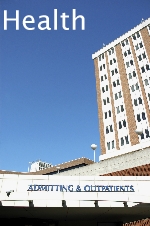
Glossary
Package Policy: An insurance policy including two or more lines or types of coverages in
the same contract.
Paid-Up Policy: An insurance policy that requires no further payments but continues to
provide coverage.
Partial Loss: A loss under an insurance policy which does not either (1) completely destroy
or render worthless the insured property; or (2) exhaust the insurance applying thereto.
Payroll Audit: An examination of the insured's payroll records by a representative of the
insurance company to determine the premium due on a policy.
Peril: A condition, action or event that causes a loss.
Permanent Life Insurance: A type of life insurance coverage that can be continued
indefinitely as long as premium payments are made on time and the policyholder refrains
from any actions that would invalidate the policy.
Personal Articles Floater: Provides all risk coverage for valuable items such as furs,
jewelry, etc. formerly insured under separate contracts.
Personal Injury: Injury other than bodily injury arising out of false arrest or detention,
malicious prosecution, wrongful entry or eviction, libel or slander, or violation of a person's
right to privacy committed other than in the course of advertising, publishing, broadcasting,
publishing, or telecasting.
Personal Injury Coverage: Liability insurance coverage for third party claims for damages
which are other than physical such as libel, slander, false arrest, etc.
Personal Injury Protection: The formal name usually given to no-fault benefits in states
that have enacted mandatory or optional no-fault Automobile Insurance coverages. PIP
usually includes benefits for medical expenses, loss of work income, essential services,
accidental death and funeral expenses.
Personal Lines: This term is used to refer to insurance for individuals and families such as
private passenger automobile or homeowner insurance.
Physical damage: Refers to damage from risks such as collision, comprehensive, fire, theft,
or any damage to the vehicle itself.
Policy Term: Length of time a policy is in effect.
Policyholder: A named person responsible for an insurance policy.
Precertification Authorization: A cost containment technique which requires physicians to
submit a treatment plan and an estimated bill prior to providing treatment. This allows the
insurer to evaluate the appropriateness of the procedures, and lets the insured and the
physician know in advance which procedures are covered and at what rates benefits will be
paid.
PPO: "Preferred Provider Organization." A managed health care plan where providers
contract with the PPO at various reimbursement levels in return for referring patients to
their practices.
Pre-Existing Conditions: Any medical condition that existed before the health insurance
policy became effective.
Premium: The sum of money paid at regular intervals for an insurance policy.
Primary Care Physician (PCP): A physician chosen by an individual to provide health care
services, keep track of medical history and medical records, and refer the individual to any
necessary specialty care providers. A PCP is usually a general practitioner (GP) or internist.
Products Liability Insurance: Provides protection against claims arising out of the use,
handling or consumption of a product.
Professional Liability Insurance: Liability insurance to indemnify professionals, doctors,
lawyers, architects, etc. for the loss or expense resulting from claim on account of bodily
injuries because of any malpractice, error or mistake committed or alleged to have been
committed by the insured in his profession.
Property Crime: Any crime to the property including home invasion, burglary, vandalism,
larceny, and car theft.
Property Damage Liability (PD-Liability): A type of insurance coverage that pays for the
policyholder's monetary loss if they are found liable for damages to a third party.
Property Insurance: Insurance which indemnifies a person with an interest in physical
property for its loss or the loss of its income-producing ability.
Proximate Cause: The effective cause of loss or damage. It is an unbroken chain of cause
and effect between the occurrence of an insured peril or a negligent act and resulting injury
or damage.
The above information is for general informational purposes only and is not to be
construed as a recommendation or advice in any way shape or form.
the same contract.
Paid-Up Policy: An insurance policy that requires no further payments but continues to
provide coverage.
Partial Loss: A loss under an insurance policy which does not either (1) completely destroy
or render worthless the insured property; or (2) exhaust the insurance applying thereto.
Payroll Audit: An examination of the insured's payroll records by a representative of the
insurance company to determine the premium due on a policy.
Peril: A condition, action or event that causes a loss.
Permanent Life Insurance: A type of life insurance coverage that can be continued
indefinitely as long as premium payments are made on time and the policyholder refrains
from any actions that would invalidate the policy.
Personal Articles Floater: Provides all risk coverage for valuable items such as furs,
jewelry, etc. formerly insured under separate contracts.
Personal Injury: Injury other than bodily injury arising out of false arrest or detention,
malicious prosecution, wrongful entry or eviction, libel or slander, or violation of a person's
right to privacy committed other than in the course of advertising, publishing, broadcasting,
publishing, or telecasting.
Personal Injury Coverage: Liability insurance coverage for third party claims for damages
which are other than physical such as libel, slander, false arrest, etc.
Personal Injury Protection: The formal name usually given to no-fault benefits in states
that have enacted mandatory or optional no-fault Automobile Insurance coverages. PIP
usually includes benefits for medical expenses, loss of work income, essential services,
accidental death and funeral expenses.
Personal Lines: This term is used to refer to insurance for individuals and families such as
private passenger automobile or homeowner insurance.
Physical damage: Refers to damage from risks such as collision, comprehensive, fire, theft,
or any damage to the vehicle itself.
Policy Term: Length of time a policy is in effect.
Policyholder: A named person responsible for an insurance policy.
Precertification Authorization: A cost containment technique which requires physicians to
submit a treatment plan and an estimated bill prior to providing treatment. This allows the
insurer to evaluate the appropriateness of the procedures, and lets the insured and the
physician know in advance which procedures are covered and at what rates benefits will be
paid.
PPO: "Preferred Provider Organization." A managed health care plan where providers
contract with the PPO at various reimbursement levels in return for referring patients to
their practices.
Pre-Existing Conditions: Any medical condition that existed before the health insurance
policy became effective.
Premium: The sum of money paid at regular intervals for an insurance policy.
Primary Care Physician (PCP): A physician chosen by an individual to provide health care
services, keep track of medical history and medical records, and refer the individual to any
necessary specialty care providers. A PCP is usually a general practitioner (GP) or internist.
Products Liability Insurance: Provides protection against claims arising out of the use,
handling or consumption of a product.
Professional Liability Insurance: Liability insurance to indemnify professionals, doctors,
lawyers, architects, etc. for the loss or expense resulting from claim on account of bodily
injuries because of any malpractice, error or mistake committed or alleged to have been
committed by the insured in his profession.
Property Crime: Any crime to the property including home invasion, burglary, vandalism,
larceny, and car theft.
Property Damage Liability (PD-Liability): A type of insurance coverage that pays for the
policyholder's monetary loss if they are found liable for damages to a third party.
Property Insurance: Insurance which indemnifies a person with an interest in physical
property for its loss or the loss of its income-producing ability.
Proximate Cause: The effective cause of loss or damage. It is an unbroken chain of cause
and effect between the occurrence of an insured peril or a negligent act and resulting injury
or damage.
The above information is for general informational purposes only and is not to be
construed as a recommendation or advice in any way shape or form.
| Copyright © 2016 Stephen W. Gersh Insurance Agency, Inc. All rights reserved. |





